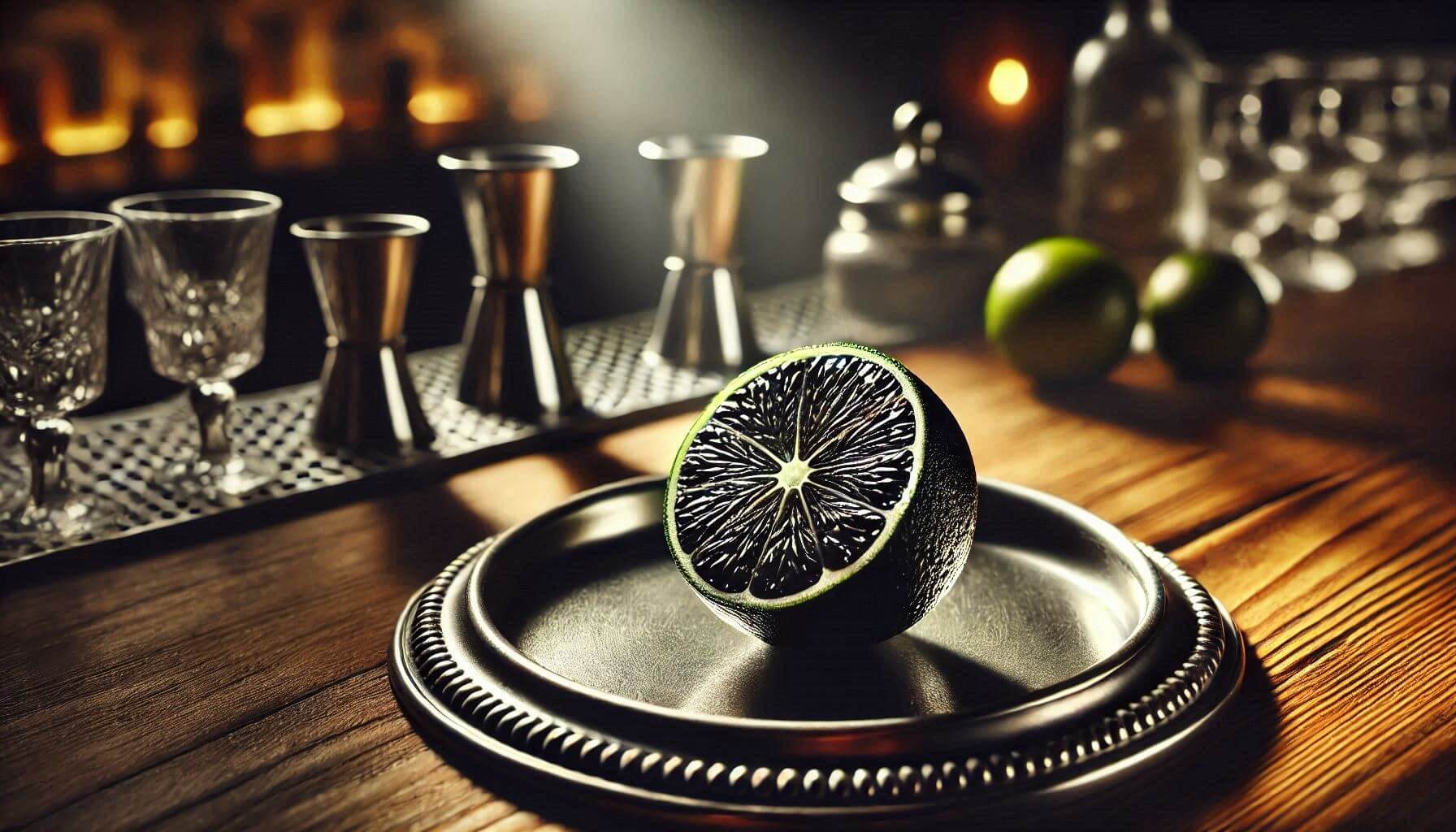Top 10 Bar Hacks Episodes of 2024
by David Klemt

AI-generated image.
Bar Hacks has come a long way over the course of nearly five years and 130 episodes, including adding a new format toward the end of last year.
As we move forward, we’re taking a moment to look back at last year’s top ten episodes of Bar Hacks.
As with our other two KRG Hospitality-produced podcasts, Hospitality Reinvented and Turn this Way, the purpose of Bar Hacks has always been helping operators and hospitality professionals.
The original format focuses on sharing the stories of, and advice from, professionals throughout the industry: successful operators, brand founders and owners, chefs, bartenders, designers, brand ambassadors, and more. We encourage people to think differently, innovate in hospitality, and stay up to date about new ideas, new products, trends, and techniques.
ReFire‘s mission is similar in that I, along with my co-host Bradley Knebel of Empowered Hospitality, want listeners to think differently, and innovate while working on the fundamentals. On ReFire episodes, we analyze two to three real-life hospitality situations, and provide our thoughts on each matter.
Episode one kicked off ReFire by looking at second chances, onboarding, and pranking team members. On episode two, we talk about F&B influencers, reservation systems, and “firing” guests.
We’re excited to see where both formats go this year. This year is off to a great start, featuring conversations with designer Nancy Kuemper, and the founder of ITALICUS, SAVOIA, and ItalSpirits, Giuseppe Gallo. And Bradley and I have some awesome conversations coming up on ReFire.
Thank you for listening. Your support is humbling, and means everything to us. And, as always, thank you to our incredible guests for taking the time to chat with us. Cheers!
Bar Hacks Top 10: 2024
Episode 109 with Colin Asare-Appiah
Happy new year, and welcome to 2024! We wanted to kick off season five of the Bar Hacks podcast with an amazing guest.
Host David Klemt had the opportunity to chat with Colin Asare-Appiah, an industry icon he’s wanted to talk to for many years. Colin is Bacardí’s trade director of multiculture and lifestyle, and the brand’s LGBTQIA+ advocate. Not only does he spread the message of diversity, equity, and inclusion, he believes (as does KRG Hospitality and Bar Hacks) that diversity is necessary for our industry to thrive.
In this episode you’ll learn about Colin’s journey through hospitality, which includes saying he’d never be a bartender to becoming a bartender and creating a bartending school; his thoughts on what makes a successful operator and team; cocktail and spirits trends for 2024; the AJABU cocktail festival coming to South Africa in March of this year, spearheaded by Colin and his partner Mark Talbot Holmes; and more. Cheers!
Spotify
Apple Podcasts
Episode 110 with James Grant
James Grant, World Class Global Bartender of the Year 2021 and Canada’s 100 Best Bartender of the Year 2022, stops into the Bar Hacks podcast!
As the director of mixology at the Fairmont Royal York in Toronto, Ontario, Canada, James oversees three distinct concepts: CLOCKWORK, REIGN, and The Library Bar. As he explains, this role is quite a step up from bartending at and managing an 18-seat speakeasy in Edmonton, Alberta.
On this episode, James talks about his journey through hospitality to his current role; his approach to developing the Fairmont Royal York’s cocktail programs; tips for speakeasy operators; advice for new operators; what it means to have The Library Bar recognized by World’s 50 Best Bars; and more. Cheers!
Spotify
Apple Podcasts
Episode 111 with Michael Tipps
It has taken a while but it has finally happened! Michael Tipps, friend of KRG Hospitality and podcast host David Klemt, dropped by Bar Hacks.
The two kick this episode off by discussing the 2024 Bar & Restaurant Expo. Both Tipps and KRG Hospitality president Doug Radkey are speaking at this year’s show. In fact, they’re teaching back to back during a bootcamp on Monday, March 18. After the bootcamp, Tipps is presenting a workshop titled “Elevated Guest Experiences.”
Tipps also gives his thoughts on the state of the industry and consulting; speaks about creating cool concepts; makes a big announcement; and more. Cheers!
Spotify
Apple Podcasts
Episode 113 with Emma Sleight
Sponsored by Perrier, North America’s 50 Best Bars is returning to San Miguel de Allende, Mexico, on April 23. The 2024 ceremony represents the third edition of North America’s 50 Best Bars.
And who better to share details about the upcoming ranking than Emma Sleight, Head of Content: Bars & Hotels for World’s 50 Best? Emma dropped by the Bar Hacks podcast to talk about the 2024 ceremony, the Voting Academy, special awards, and more. In fact, listeners will get to learn a bit about Emma herself, including her being a sommelier and Associate of Cheese.
We’re looking forward to this year’s list! Be sure to stream the ceremony on YouTube or Facebook if you won’t be attending in person. Cheers!
Spotify
Apple Podcasts
Episode 114 with Anne Becerra
The fantastic Anne Becerra returns to the Bar Hacks podcast! Anne is also returning to the Food & Wine Classic in Aspen, Colorado, this year. That incredible event takes place from June 14 to June 16.
In addition to talking about the Food & Wine Classic, Anne and Bar Hacks host David Klemt chat about beer styles to check out and put on your menu now; service and turning non-beer drinkers on to beer; a few brewers you should have on your radar; whether 2024 is (finally) the Year of Lager; and more. Cheers!
Spotify
Apple Podcasts
Episode 117 with Pete Flores
We love a savvy operator here at Bar Hacks and KRG Hospitality. Juan Please Drink Company co-founder Pete Flores certainly falls into that category.
For several years, Flores was sure someone would bring a simple-but-delicious drink to the RTD space: lemonade and tea with a tequila base. Yet, that prediction never did come to pass. So, as Flores says, realizing that door was open, he stepped through it with a small team and brought the TLT (tequila, lemonade, tea) to market under the Juan Please Drink Company portfolio.
During this conversation you’ll learn about Flores’ experience in the hospitality world, how his vision for an RTD became reality, the challenges he and the team have faced and overcome, plans for future expressions, and much more. Cheers!
Spotify
Apple Podcasts
Episode 119 with Matthias Ingelmann
We’re excited to welcome Matthias Ingelmann, bars manager at KOL Mezcaleria in London, back to the
Bar Hacks podcast! We first spoke to Matthias on
episode 106, mostly about KOL, one of the World’s 50 Best Restaurants, and his role as the bars manager. This time, however, we’re learning about mezcal.
Matthias breaks down styles of mezcal, regions (including the fact that mezcal is made in countries other than Mexico), and producers. He also dispels a number of myths and misconceptions, shares his approach to introducing guests to mezcal (and sotol and raicilla), and suggests food pairings. Of course, there’s so much more, so make sure to give this episode a listen. Cheers!
Spotify
Apple Podcasts
Episode 121 with Marybeth Shaw
Marybeth Shaw is the chief creative officer at Wolf-Gordon, an American design company that provides wallcoverings, wall protection, upholstery, paint, and more. Shaw has achieved an MBA from NYU Stern, an M. Arch. from the Ecole d’Architecture de Paris-Belleville, an MCP from MIT, and, most recently, an MBA. Further, she earned the HiP Award for Creative Direction from Interior Design in 2017, and serves on the Board of the Wallcoverings Association.
For the past couple of years, Shaw has curated intriguing design installations for HD Expo, held in Las Vegas. It was the first installation, HI > AI, that grabbed Bar Hacks host David Klemt’s attention. Since then, he has wanted to have her stop by the podcast. Finally, the two made that happen!
Shaw stops by the discuss wallcoverings, wall protection, sustainability, finding and nurturing the careers of designers, her own journey through the worlds of hospitality and commercial design, design trends (some that she’d like see go away), and much more. Cheers!
Spotify
Apple Podcasts
Episode 123 with Roger Thomas
Real Las Vegas royalty stopped by the Bar Hacks podcast! That’s not hyperbole: Roger Thomas truly changed the face of Las Vegas and how people approaching gaming around the world over his 40-year career.
While Roger has made “cameo” appearances on projects for clients here and there, he really worked for a single client, building the Mirage, the Bellagio, and Wynn and Encore resorts and casinos in multiple markets across the globe.
During this conversation, Roger shares how he got his start in interior design in hospitality, his approach to luxury design, how he has mentored other designers, some of his favorite design features, his new book Resort Style: Spaces of Celebration, tips for hiring and working with interior designers, why designers flock to Las Vegas, and so much more. Cheers!
Spotify
Apple Podcasts
Episode 124 with Laura Louise Green
Psychotherapist, soon-to-be organizational psychologist, and former bartender Laura Louise Green drops by the Bar Hacks podcast to talk about a very important topic: burnout.
The hospitality industry has been taking strides to address many of the challenges that affect hospitality professionals’ physical, mental, and emotional health. Burnout is one of the many dangerous issues we all face, yet we don’t always acknowledge.
Among other important conversations we need to have that are long overdue, Green has been taking on burnout head-on. On this episode, she defines burnout, shares symptoms, explains the truth and myths about burnout, offers some ways to heal from it, and much more.
Spotify
Apple Podcasts
Image: Canva

Book Below to Setup a 30-Minute Complimentary Discovery Call and Request for Proposal.








